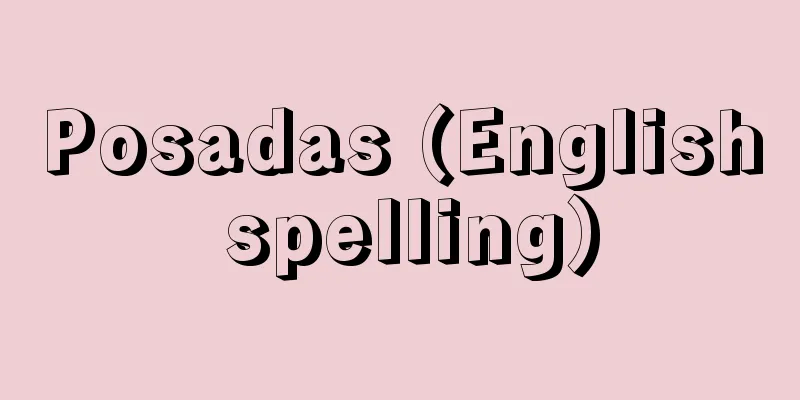Tomita Manor - Tomita Manor

A manor in Kaito County, Owari Province. It is also written as "Toda" and "Toda". It was located in the lower Shonai River basin, centered on what is now Tomita-cho, Nakagawa Ward, Nagoya City. It was established at the end of the 11th century. Except for a part of the land owned by the Anenokoji family, it was the land owned by the Konoe family. In 1211, Hojo Yoshitoki established the Jito-uke system. In 1283, the Jito position was donated to Engaku-ji Temple in Kamakura, and in 1327, the Jito-uke system was established again, but the lord's share was greatly reduced, and the annual tax was less than 10% of the Jito's share. The Tomita Manor map (Important Cultural Property) created at that time accurately depicts the mandokoro (administrative office), shrines, temples, and rows of houses in the post town. Under the Kenmu government, the lord of the temple became Ano Renshi, but the Toki clan, the military governors, and local lords began to seize the land, and in 1388 Engakuji gave up managing the manor, and in 1401 exchanged half of the manor for the territory of the Ise clan of Kazusa Province.Tomida ManorSource : Heibonsha Encyclopedia About MyPedia Information |
尾張国海東(かいとう)郡の荘園。〈とだ〉ともいい〈戸田〉とも書く。現名古屋市中川区富田町を中心にした庄内川下流域にあった。11世紀末の成立。一部姉小路家領を除いて近衛家領。1211年北条義時により地頭請(じとううけ)が成立。1283年地頭職は鎌倉円覚寺に寄進され,1327年再度地頭請がなされたが,領家(りょうけ)の得分は大きく後退,年貢は地頭分の1割にも満たなかった。このとき作成された富田荘絵図(重要文化財)には政所(まんどころ)や社寺・宿場の家並などが正確に描かれている。建武政権下では領家は阿野廉子(あのれんし)となるが,守護土岐氏や国人(こくじん)層の押領(おうりょう)が始まり,1388年円覚寺は荘経営を断念,1401年当荘半分を上総国伊勢氏領と交換している。
富田荘【とみだのしょう】出典 株式会社平凡社百科事典マイペディアについて 情報 |
Recommend
Yue-weicao-tang bi-ji (English)
A collection of strange tales from the Qing Dynast...
Enclosure - Mawaribuchi
A horizontal piece of wood attached to the edge of...
Indian National Trade Union Congress
…[Yamaguchi Hirokazu]. … *Some of the terminology...
Starling, EH (English spelling) StarlingEH
Secretin is a hormone that is secreted from the g...
Grolier, J.
…The spine bands remain longer in books from Engl...
Gogarten, Friedrich
Born: January 13, 1887 in Dortmund [Died] October ...
Polytrichum commune - Polytrichum commune
A species of moss in the Polytrichum family. It h...
Tokugawa Jikki
This is a record of the Tokugawa Shogunate from t...
Izuhara [town] - Izuhara
An old town in Shimoagata County, which occupies t...
Apollo spacecraft - Apollo spacecraft (English name)
A spacecraft built by the National Aeronautics and...
Ojo Gokurakuin Temple
The main hall of Sanzen-in Temple in Ohara, Sakyo ...
Nun - Amahoshi
〘Noun〙① A woman who became a nun after leaving the...
Lithium aluminum hydride - Suisoka aluminum lithium (English spelling) aluminum lithium hydride
Chemical formula: LiAlH 4 . A colorless solid prod...
Exorcist - Jugonshi
An official of the Bureau of Medicine, as stipulat...
Soft component
...Low-energy protons and neutrons are also relea...









